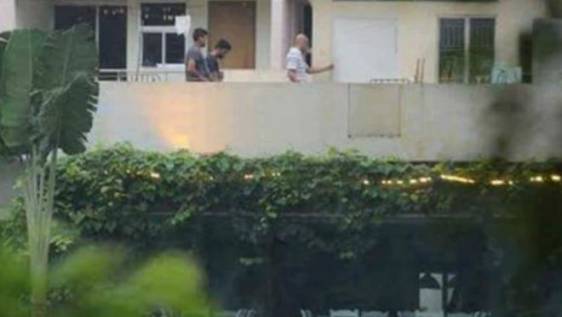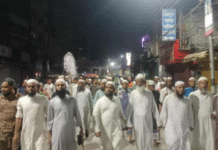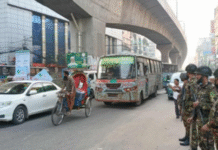After the attack, the top militant leaders are kept in separate cells and brought under surveillance
Investigators dealing with the dreadful Gulshan terror attack claimed to have identified the mastermind, saying he fled the country at least seven months ago after finalising the operation plan and is now hiding in West Bengal of India.
They said that it was a combined operation by the members of three outlawed militant groups – Jama’atul Mujahideen Bangladesh (JMB), Hizb ut-Tahrir and Ansarullah Bangla Team. The attackers made preparations for the last seven months.
Investigators have learnt about the plans after detaining other members of the gang from different parts of the country including Niketon in Dhaka. But they refuted to disclose the name of the kingpin.
International militant group Islamic State claimed responsibility for the Gulshan attack that killed 22 people, mostly foreigners, on July 1. Five attackers were killed in a commando operation the next morning.
Police earlier said that the members of JMB and Ansarullah had been involved in the attack. Meanwhile, a Hizb ut-Tahrir member was arrested in Madaripur for hacking a Hindu college teacher. All these groups have vowed to establish Islamic rule in the country.
The mastermind designated two teams for Dhaka and Tangail to carry out reconnaissance before conducting two operations, sources said, but could not clarify if the teams comprised the attackers. The Tangail team later went to Kishoreganj and launched an attack on the police near Sholakia Eidgah on Eid day killing three persons.
A well-placed source said that the law enforcers had information about a massive attack as planned by the top leaders of the banned groups, now detained at Kashimpur jail. To implement the plan, a senior JMB leader came from abroad through India and is still staying in the country.
This version corroborates with the claim by the DB police made last year saying that the top militant leaders had agreed to work together at a meeting inside the jail in late 2014 as their aim was the same – establishing Islamic rule in the country by ousting the incumbent government.
After the Gulshan attack, those militant leaders were kept in separate cells and brought under 24-hour surveillance, said a senior official at the jail headquarters. No visitors are allowed to meet them except for their family members.
Recently, a drive was conducted in Niketon area from where some of their associates were detained. But the most-wanted JMB leader fled and has remained traceless.
Additional Deputy Commissioner of Counter-Terrorism and Transnational Crimes unit Sanowar Hossain said that they had made much progress in the case. “We are now analysing the information gleaned from the suspects and conducting raids to arrest the culprits.”
Meanwhile, the CTTC unit has sent a letter to Dhaka Medical College Hospital’s forensic department to assess if any kind of drugs was present in the blood of the attackers as they killed the victims, mainly the women, brutally.
Assistant Professor Sohel Mahmud of the DMCH said that they had already collected liver, kidney, stomach and food from their stomachs as samples for viscera test. He hopes to get the report next week.
He said that the autopsy reports on the attackers would be finalised within two days.
In response to another question, Mahmud said that eight of the 20 slain hostages had been shot and later hacked to ensure death. Others were hacked to death. All of them were killed before midnight, he added.
He said that they also collected samples to examine if the female victims had been raped.
One of the attackers had lost a wrist while one hand of an attacker and the face of another were deformed. “The three others were shot dead during the commando operation,” he added.
Source: Dhaka Tribune










